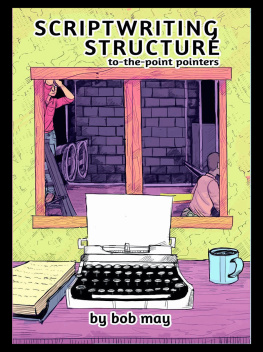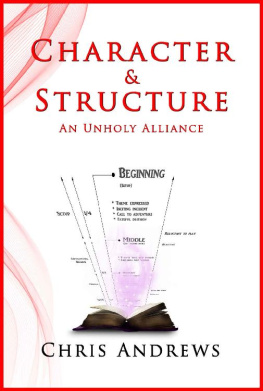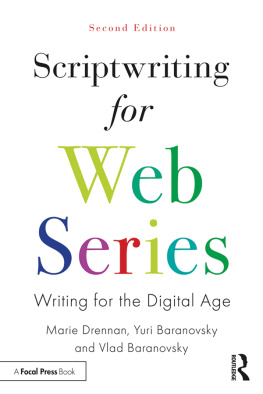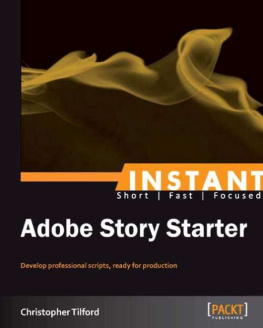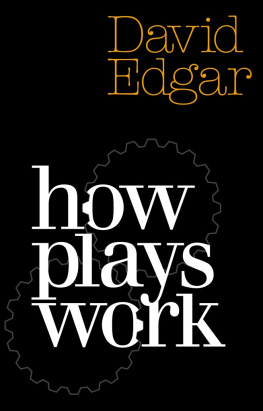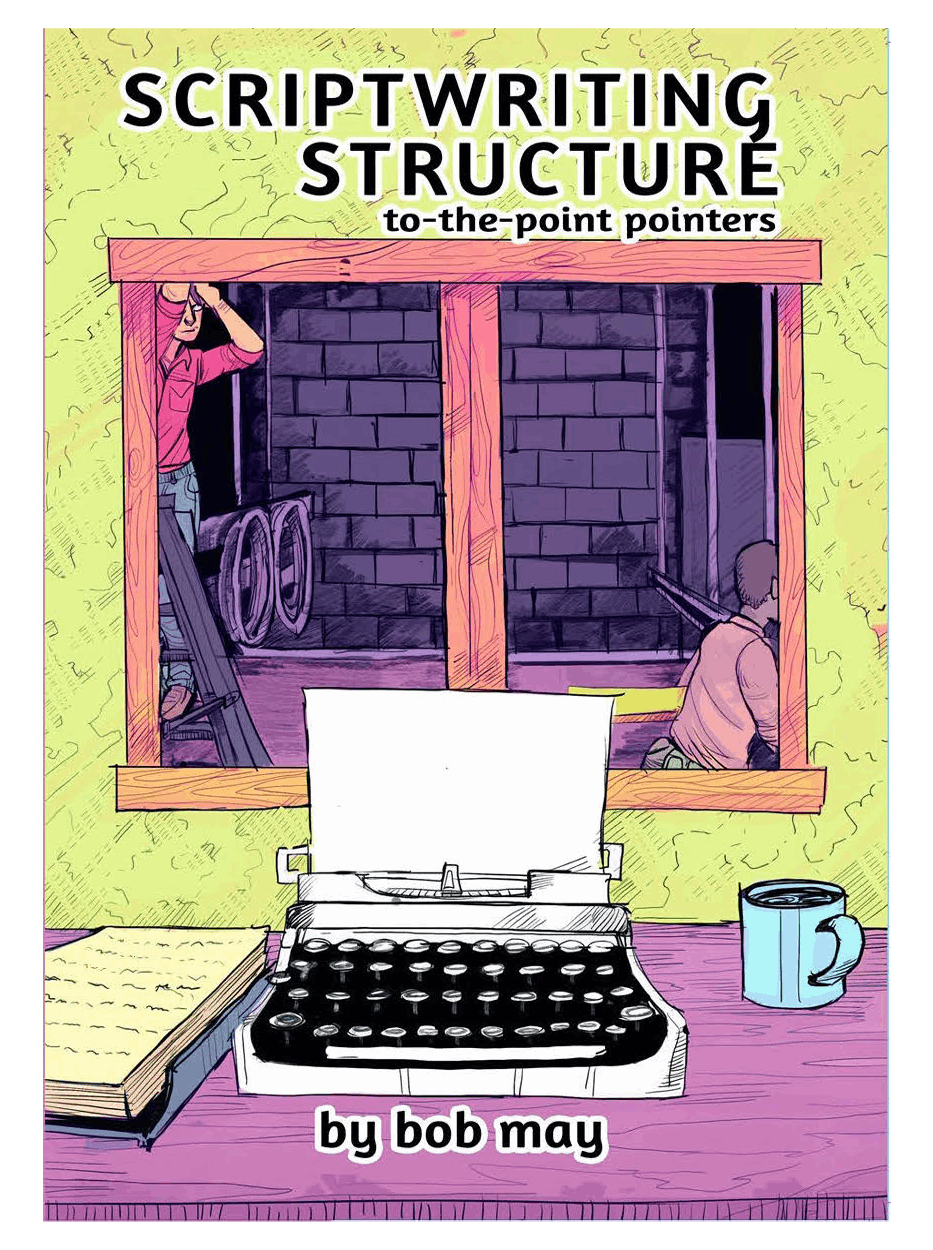Scriptwriting Structure: To-the-Point Pointers
Bob May
Published by Skye Bridge Publishing, 2016.
While every precaution has been taken in the preparation of this book, the publisher assumes no responsibility for errors or omissions, or for damages resulting from the use of the information contained herein.
SCRIPTWRITING STRUCTURE: TO-THE-POINT POINTERS
First edition. October 13, 2016.
Copyright 2016 Bob May.
ISBN: 978-1386578789
Written by Bob May.
10 9 8 7 6 5 4 3 2 1
Lots of love to my wife, Cathy, for putting up with me holed up in my office every night as I write.
Copyright 2016 Bob May
Scriptwriting Structure: To-the-Point Pointers / Bob May
All rights reserved. No part of this publication may be reproduced, distributed, or transmitted in any form or by any means, including photocopying, recording, or other electronic or mechanical methods, without the prior written permission of the publisher, except in the case of brief quotations embodied in critical reviews and certain other noncommercial uses permitted by copyright law. For permission requests, please contact the author directly.
Rough Scenario, Thirteen Commandments, Introduction Monologue, and Good Format Hunting used with permission by the authors.
Edited by D. A. Sarac
www.TheEditingPen.com
Cover Design by Gustav Carlson
touristunknown.com
Skye Bridge Publishing, Asheville, NC
Please contact
Printed in the United States of America
Print: ISBN 978-0-9967583-4-5
Are you a beginning playwright? A new screenwriter? Are you a seasoned professional seeking proven practices in scriptwriting? Solid structure is the key, and in Scriptwriting Structure: To-the-Point Pointers, Bob May has spun Aristotles theories and modern practices together to form his own structural techniques that have led to twenty-five of his scripts being published and hundreds of productions around the world. The right-to-the-point nature of the storytelling will make you feel as though Mr. May is talking directly to you, teaching his valuable lessons on:
- illustrating what dramatic action is
- understanding the importance of character objectives in scripts
- using proper formatting in plays or screenplays
- understanding and using a script structural technique known as PASTO
- applying Aristotles Six Key Elements in the writing of scripts
- how to be a better playwright or screenwriter
Writing scripts that work can be a solitary business, but with this book, you have a friend by your side.
Foreword
In the past twenty years, we have seen a huge increase in the number of playwriting degrees and courses at colleges and universities. In the past dozen years, this has evolved to include screenwriting (for television and film) and even such users as video gamers who are constantly searching for new plots. The new label at several institutions has become Writing for Dramatic Media. It makes sense! The number of new plays produced is small in relation to the number written. One wonders how many excellent play scripts just do not make it.
In truth, the number of plays produced professionally is small compared to the number of media scripts produced for that industry. It seems natural that gifted, trained writers would seek to use their skills to influence through the huge media marketplace.
There are a plethora of books dealing with how to sell, pitch, and market your script. Scriptwriting Structure: To-the-Point Pointers delves in to writing. Remember, prior to selling anything, you must have a worthy product!
It could be asked why more programs in higher education do not produce new work. The truth is that there is a great amount of new work produced, but it still does not match the total production of traditional, proven plays. We in the academy must educate our students and expose them to contemporary, modern, and classical writers. Thus, in a four-play season, we would be unlikely to see more than one original play. What are writers to do?
The answer is: A market has been found television, film, etc. The new question is: Do the same skills a playwright uses translate to media? Bob May has created an excellent book that relies on the basics of good writing, whether a play or film/television script. He does not attempt to instruct us on how to be an instant success but rather focuses on the basics and the use and translation of these proven fundamentals to other media.
He covers Aristotles Six Key Elements. He includes subtext, play structure, character development, and character objectives. In short, he reminds us all of the very basis for creation of a story and how to translate the story to greatest effect in media. He, to be blunt, forces us to examine our scripts for content!
I have known Bob as a student, friend, and colleague for many years. I like to think I convinced him, having seen his excellent work as a director, that he did not need an advanced degree in directing but needed to develop his other talent and passionwritingfor him. He has continued to both write and direct with success. He is a person of the theatre who has made the transition smoothly to television and film while remaining faithful to his roots.
Bob is also an approachable, candid, and humorous person. The book captures these qualities and is the stronger for his common-sense, straightforward approach to writing. It can be of tremendous use for practicing playwrights wishing to write for media as well as aspiring playwrights who wish to learn as they develop their talents.
Jeff Koep, PhD, Professor of Theatre
Dean, College of Fine Arts 1994-2015 / Univ. of Nevada, Las Vegas
Introduction
I have spent over fifty years in the theatre, starting out as an actor, graduating to a director with over four hundred fifty productions under my belt, and finally finding a comfortable home as a playwright.
I received an MFA from the University of Nevada, Las Vegas Playwriting Program. Fifty of my plays have been produced; twenty-five of them published with hundreds of productions in the US and around the world. Of all the plays Ive directed, thirty-seven of them have been originals. Ive been writing plays for over forty years and teaching playwriting for half those years. I currently teach playwriting and screenwriting in the BA and MFA Creative Writing programs at the University of Central Arkansas.
When thinking about writing this book, I wasnt sure if I would write it on playwriting or screenwriting. Or maybe television writing. I decided to write it as a scriptwriting book. While the writing principles for each of the mediums are similar, the formatting is different for each one to illustrate each mediums strengths.
Scriptwriting formulas tell us plays are comprised of 75 percent dialogue and 25 percent action. Films, by contrast, are 75 percent action and 25 percent dialogue. Television is fifty-fifty. The strength of each of the mediums is exemplified by the percentages and reflected in each ones formatting. More on formatting in Chapters Seven and Eight.
Before I begin, let me use playwriting to illustrate an important point.
Plays are man-made. They are not real life. Real life doesnt happen or unfold as neatly structured as a play. Just look at the spelling of the word playwright. Its wright, not write. Thats right, it is wright, not write.
And why is that?

